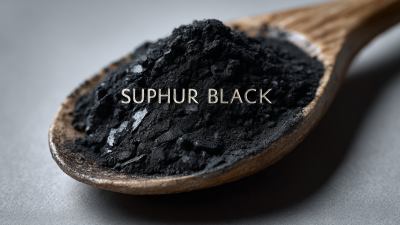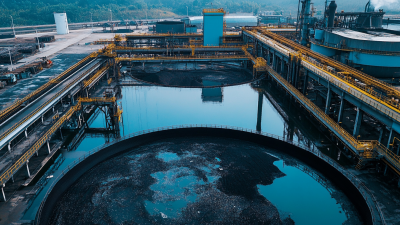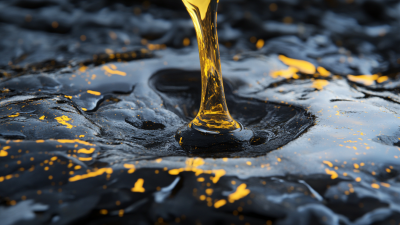Sulphur Black, a dye known for its deep, rich coloration, has a wide range of applications in various industries, making it a vital component in textile production, leather processing, and other materials. Its ability to impart vibrant, long-lasting shades while being cost-effective has positioned it as a preferred choice for manufacturers and designers alike. However, alongside its versatility, the environmental impact of Sulphur Black raises important concerns. The synthesis and application processes can lead to pollution and health issues if not managed properly, prompting a need for sustainable practices within its usage. This exploration delves into the multifaceted roles of Sulphur Black, assessing its benefits across different applications while also critically examining the environmental ramifications of its widespread use. By understanding both sides of Sulphur Black's impact, we can navigate the fine line between industrial utility and ecological responsibility.

Sulphur Black, known for its deep and rich color, has become a staple in the textile industry, particularly in the dyeing of cotton and other cellulose fibers. One of the standout features of Sulphur Black is its cost-effectiveness compared to other black dyes. As the demand for sustainable and eco-friendly products rises, manufacturers are increasingly turning to Sulphur Black due to its low-impact production process and efficiency. The dye is also favored for its excellent light and wash fastness, making it suitable for a variety of applications, from fashion to home textiles.
Market trends indicate a growing acceptance of Sulphur Black in the textile sector, driven by consumers’ preference for darker shades that maintain durability. Companies are innovating with Sulphur Black to create unique blends that enhance performance while reducing environmental impact. This trend is not just limited to clothing; it extends to other textile applications, including upholstery and technical fabrics. As sustainability remains a central theme in textile production, Sulphur Black's versatility positions it well for future growth and adaptation in the ever-evolving market landscape.
This chart illustrates the market share of Sulphur Black across various textile types, highlighting its adaptability and widespread usage in the industry.
 The production of sulphur black, a widely used dye in textiles, can have significant environmental implications. The manufacturing process often involves the release of various emissions, which may contribute to air pollution and adversely affect local ecosystems. The burning of fossil fuels and the chemical reactions involved can lead to the release of sulfur dioxide and other harmful by-products, compromising air quality and posing health risks to nearby communities.
The production of sulphur black, a widely used dye in textiles, can have significant environmental implications. The manufacturing process often involves the release of various emissions, which may contribute to air pollution and adversely affect local ecosystems. The burning of fossil fuels and the chemical reactions involved can lead to the release of sulfur dioxide and other harmful by-products, compromising air quality and posing health risks to nearby communities.
Additionally, the waste generated during sulphur black production poses a considerable environmental challenge. Effluents may contain residual dyes and reactive chemicals that, if not managed properly, can contaminate water sources and disrupt aquatic life. The solid waste produced, including sludge and packaging materials, also requires careful disposal to mitigate its impact on landfills and soil quality. Implementing effective waste treatment and emissions control strategies is essential to minimize these environmental hazards and ensure the sustainability of sulphur black manufacturing.
Sulphur Black is a widely used dye in the textile industry, primarily for its cost-effectiveness and deep shades. However, when assessing its sustainability, it is essential to compare it to alternative dyes, such as reactive and natural dyes. According to a report by the International Union of Pure and Applied Chemistry (IUPAC), while Sulphur Black can be produced with a lower environmental impact than some synthetic dyes, it still poses considerable challenges in terms of wastewater management. A study published in the Journal of Cleaner Production indicated that Sulphur Black has a higher tannin content, which can lead to the generation of toxic byproducts during the dyeing process.
In contrast, reactive dyes tend to require more water and energy, which increases their environmental footprint. However, advancements in the formulation of reactive dyes are increasingly mitigating these concerns. A 2021 report from the Sustainable Apparel Coalition highlighted that some newer reactive dyes can achieve a similar color fastness to Sulphur Black while using less water and producing fewer harmful treats. Furthermore, natural dyes, while often perceived as environmentally friendly, can contribute to land use changes and biodiversity loss, especially when sourced from specific plants. Thus, careful evaluation of Sulphur Black against these alternatives reveals the complex interplay between cost, sustainability, and environmental impact within the dyeing industry.
| Feature | Sulphur Black | Alternative Dyes (e.g., Reactive Dyes) |
|---|---|---|
| Color Fastness | Excellent | Moderate to Good |
| Application Method | Batch Dyeing | Continuous or Batch Dyeing |
| Water Consumption | Moderate | High |
| Waste Generation | Low | High |
| Biodegradability | Moderate | High |
| Toxicity Level | Low | Variable |
| Cost-Effectiveness | High | Moderate |
The dyeing industry has long relied on sulphur black due to its rich color and cost-effectiveness. However, the environmental implications of its usage have prompted a rigorous regulatory framework aimed at ensuring compliance across various jurisdictions. According to the International Organization for Standardization (ISO), over 60% of the world’s dyeing industries are now required to adhere to stringent guidelines to mitigate pollution caused by chemical discharges. Key regulations, such as the REACH (Registration, Evaluation, Authorisation and Restriction of Chemicals) in Europe, necessitate thorough risk assessments and potentially impose restrictions on hazardous substances, including certain forms of sulphur black.
In the United States, the Environmental Protection Agency (EPA) has initiated several programs aimed at monitoring and mitigating environmental risks associated with dyeing processes. Reports from the EPA reveal that wastewater effluents from dyeing facilities can contain up to 2,300 milligrams per liter of total suspended solids, primarily due to sulphur-based dyes. To comply with these regulations, manufacturers are increasingly investing in advanced wastewater treatment technologies. Approaches such as bioremediation and membrane filtration are not only vital for compliance but also serve to enhance the sustainability of the dyeing process, paving the way for a more eco-friendly application of sulphur black.
Sulphur black, known for its versatile applications in textiles and various industrial processes, presents a compelling cost-effectiveness proposition for manufacturers. Its low production costs, estimated at around $1.50 to $2.00 per kilogram, make it an appealing choice compared to synthetic alternatives. In industries where cost is critical, such as the textile sector, the economic benefits can be substantial. Reports indicate significant demand in the dye industry, with projections indicating a compound annual growth rate (CAGR) of about 5% through the next decade. This anticipated growth underscores the cost-competitive nature of sulphur black as manufacturers seek to optimize their operational expenditures.

Moreover, the environmental impact of sulphur black should not be overlooked. As manufacturers increasingly face regulatory pressures to adopt sustainable practices, using sulphur black can align with environmental strategies while maintaining cost efficiency. Innovations in industrial sulfur separation and purification are improving the sustainability of sulphur black production, which can reduce carbon footprint. A sustainable approach not only enhances brand reputation but can also lead to increased market share in an eco-conscious consumer landscape. Studies suggest that integrating environmentally friendly practices could yield cost savings of up to 20% through enhanced process efficiencies and reduced waste handling costs.






